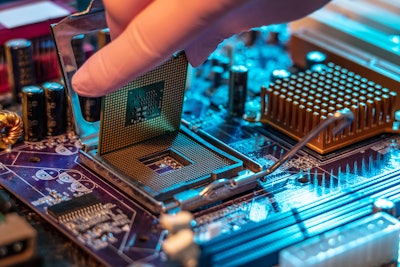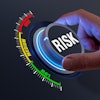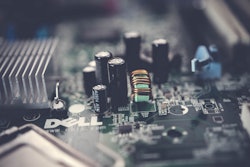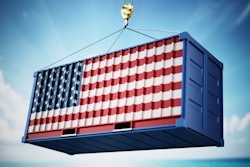
The pandemic has forced the world to live digitally. Social distancing has meant that those who could work from home did, making sure essential workers could do their jobs as safely as possible. While healthcare professionals are rightly heralded as the heroes of the pandemic, supply chain teams were the unsung heroes battling at the front lines making sure that vital goods, including fuel, food and medical supplies continued to flow.
Supply chain has always been vulnerable to sudden changes and crises. The Coronavirus disease (COVID-19) pandemic ushered in a new era of disruption and along with it, calls for contactless and touchless technologies that kept businesses open while protecting people. Radio frequency identification (RFID) was successful as a technology for contactless identification of assets that optimized processes and prevented errors. Although technology adoption was steadily increasing before the virus, the prolonged interruption and RFID’s inherent ability to increase safety has necessitated adoption throughout supply chains.
How is RFID positively impacting supply chains during COVID-19?
Whether due to illness or workforce reductions, the reality of a smaller staff required organizations to do more with less. The pandemic has laid bare that technology is critical not only to a company's survival but also to the survival of our global community. The ideas that Industry 5.0 is now bringing about automated systems and our ability to work with them are vital. RFID technology merges the digital and physical world to create trusted identities and delivers huge potential in the speed, depth and breadth of processes in large sectors of the economy. Falling costs, touchless solutions and the importance of visibility in supply chain are further driving RFID’s embrace.
RFID technology in healthcare. RFID was solving problems in healthcare supply chain before the pandemic. Overwhelmed ICUs and shrinking bed availability have made process optimization critical. Reducing variation in quality and eliminating errors literally mean the difference between life and death. RFID technology enables healthcare to automate logistics that improve capacity management and the care cycle.
Passive RFID applications in healthcare have far-reaching implications. RFID is safe for patient interaction, easy to apply, yet durable to resist high temperatures and water, as well as offers transparent communication layers for integration with existing apps and systems. Facilities can track logistical chains, manage inventory and ensure untampered delivery of sensitive assets such as vaccine kits and emergency drugs; automate the configuration and lifecycle of medical devices and provide audit trails that confirm the proper disinfection, inspection, repair, use and billing of tools in treatment; and enable data mining capabilities for reporting metrics management and analysis. NFC tags offer provider authentication, visit documentation, secure proof of presence and confirmation of care through identifications that are cryptographically secure.
Active RFID that is cloud-connected offers location services within the healthcare ecosystem. Real-time location systems (RTLS) offer visibility into the immediate status of free and in-use inventory of devices and technology and save precious minutes in locating essential tools, such as crash carts, in emergency situations.
RFID in global tourism. Hotels, resorts, airlines and tourist attractions experienced a boom up until 2020 when the COVID-19 pandemic caused shutdowns and travel restrictions. As sentiment improves over the coming months, maintaining consumer trust will help to accelerate the recovery. Hotels and resorts using RFID tags fixed to laundry reduce the risk of human error and maintain safety along with high quality standards as linens are recorded, identified and sorted electronically.
Active RFID in the form of RTLS has applications for tourism by assisting in pandemic-related efforts. Physical distancing can be enforced by deploying beacons within a room and tags affixed to wrist bands or badges for guests or personnel. Beacons are configured to detect tags that come within a specified space of one another and create real-time alerts so that social distancing can be enforced. RTLS also allows for occupancy level monitoring and contact tracing to comply with regulatory guidelines and requirements.
RFID in brand protection and authentication. Counterfeiting results in lost sales and very unpleasant customer experiences. Protecting major brands against grey market goods is a global challenge and successful brands are subject to more sophisticated attempts at imitation. In fact, counterfeiting has skyrocketed since the onset of COVID-19, aided by shoppers having almost no choice but to turn to e-commerce.
NFC tags embedded in objects – such as rare shoes, limited-edition bottled spirits, collectibles, antiques or even diplomas – are difficult to remove and generate a unique digital code with every use, verifying authenticity. And now, with larger support for NFC, we see the uptake of embedded RFID technology as part of trusted brand authentication and protection strategies.
Final thoughts
The COVID-19 pandemic intensified weaknesses that existed in supply chain, worsening bottlenecks and choking resources for those still operating on traditional models. RFID is empowering organizations to respond to the pandemic by implementing advanced technologies at scale. As the world returns to work, RFID will aid in the continued recovery efforts. Markets will mature, form factors will standardize and software interoperability will improve as use cases are better understood.
Industry 5.0 will bring into sharp focus how man and machine will work together to improve productivity, adding a personal touch to the pillars of automation and efficiency brought on by Industry 4.0. RFID technology creates a robust portfolio of solutions for practical use, including larger data storage capacity with cryptography and writeback capabilities. RFID and its advancing technologies will continue to shape new business models into the future, driving growth and making the next revolution even smarter.

















